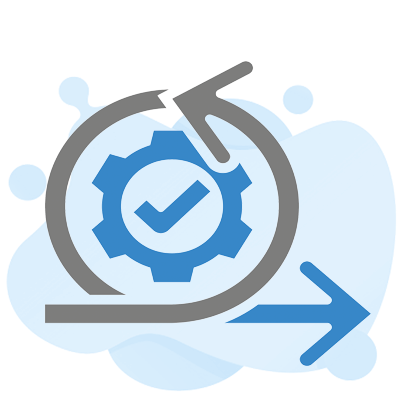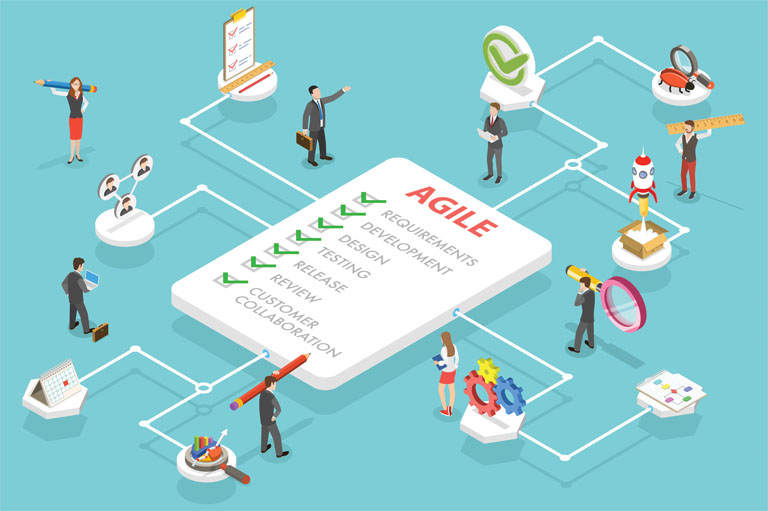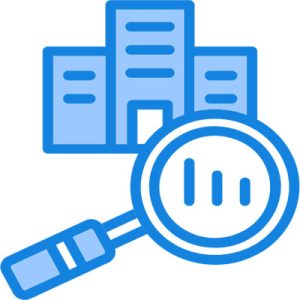Agile Business Analysis Certification

The Agile Business Analysis certification course teaches you how to perform BA tasks in an Agile environment. It includes hands-on practice and interactive class sessions with a seasoned expert and business analyst executive. You’ll also learn how to write user stories, decompose epics, and manage an analysis wall. This will help you function tactically and strategically as a BA in an Agile team.
This certification is a great way to show employers that you have the skills and experience to work in an Agile environment. It is a valuable addition to any resume, especially for those looking for new opportunities in the tech industry.
Free Agile Business Analysis Practice Test Online
Agile Business Analysis Book
Business Analysis is an essential component of agile product development. This book demonstrates how to apply traditional business analysis skills in an agile environment, while also explaining how to use agile principles and practices to deliver real value to the customer. The book includes a number of tools, techniques, diagrams, templates, and job aids to help you perform business analysis in an agile environment.
The agile approach to product planning and analysis is a critical element in the success of business transformation projects. This is because business solutions must address all the people, process, information and technology aspects of the organization. While the original agile philosophy and manifesto focused on software, it is important to remember that business analysis work has a wider context than delivering working code.
Business agility is the ability to respond quickly and nimbly to changes in customer requirements and market conditions. To achieve business agility, organizations need a clear vision of success and strong stakeholder engagement. To make this possible, companies must be able to deliver products that provide peak value to customers.
Agile Business Analysis Course
The agile business analysis course is a practical workshop designed to teach participants the techniques required for conducting business analysis in an agile environment. The workshop covers both the core agile practices and the BA role in an agile development environment, including elicitation techniques, story mapping, and writing effective user stories. It also covers the requirements management life cycle, including backlog refinement and facilitated sprint planning sessions.
The course is suited for business analysts who are already familiar with agile development and those looking to expand their skills in the area. It provides an in-depth understanding of how to conduct business analysis in an agile environment and identifies key differences between traditional and agile methods.
In an agile environment, the product owner has ultimate decision-making authority. However, the agile business analyst still has an important role to play. They must analyze the business domain, stock and groom the product backlog, and ensure that the team understands the requirements. They must also consider the stakeholders and policies that affect the business process.

Agile Business Analysis Process
The agile business analysis process differs from traditional business analysis. It promotes a flexible and collaborative approach to requirements development and management. It also involves an iterative and incremental approach to project delivery. This allows for more efficient and effective solutions while allowing stakeholders to see the product in action.
An agile business analyst uses high-impact collaboration and communication techniques to deliver value to the team. They use their expertise to transform the business needs into a technology work plan. They also participate in planning workshops to identify and document requirements. They also help the team determine how to break down complex features into logical user stories that can be delivered in an iteration.
An agile BA is a member of an Agile team and has a strong mindset that aligns with the Agile principles. They understand the importance of delivering value quickly and consistently, collaborating with others to get the job done, iterating to continually learn, simplifying to avoid waste, and taking into account the context in which they are working. In addition, they participate in milestone or project “lessons learned” sessions to reflect on their work and identify what could be improved.
Agile Business Analysis Techniques
In Agile environments, business analysts work with the development team to ensure that the product meets the company’s business needs. They also analyze the business domain and requirements to help the development team deliver functionality. This requires a number of different techniques that the business analyst can use to improve the quality of the final product.

These include analyzing the current state, stocking and grooming the product backlog, and using progressive estimation to make predictions about future releases. They may also participate in iteration and project retrospectives to evaluate performance, identify areas for improvement, and develop a plan to address them.
A business analyst who works in an Agile environment should have a range of skills, including strategic thinking, evaluating and envisioning; analysis modeling and efficient specification; and communication with stakeholders. They should be comfortable collaborating with other members of the development team and embracing a continuous learning mindset. They should be able to participate in planning workshops, help the team define what is valuable, and facilitate user story workshops. They should also be able to define lean, testable requirements and turn examples into acceptance tests.
Business Analysis In An Agile Scrum Environment
Business analysts are crucial for documenting and defining requirements in agile environments. Their responsibilities are more dynamic than in traditional waterfall models, and they may take on different roles in agile projects. Some of these responsibilities include supporting the product owner, stocking and grooming the product backlog, and working with the agile team
Requirement documentation is a key responsibility of an agile BA, and the role often involves confirming requirements with stakeholders. This helps the project team stay focused and makes sure that the right decisions are made. It also reduces the risk of non-customer-focused knee-jerk decision making.
Another aspect of the agile BA role is analyzing the business domain and performing progressive estimation. This includes identifying and understanding high-level business requirements and breaking them down into small, time-boxed deliveries. This is important because it helps the development team to estimate the effort needed for each iteration and prioritize backlog items. This can help the delivery team deliver the highest value to the customers. It also helps them identify and define quality attributes.

The Agile Guide To Business Analysis And Planning
This book provides clear, actionable guidance for every product owner, product and program manager, business analyst, and requirements engineer seeking to improve agile analysis and planning. Renowned author Howard Podeswa teaches best practices drawn from agile and agile-adjacent frameworks including ATDD, BDD, DevOps, CI/CD, Kanban, Scrum, SAFe, XP, Lean Thinking, Lean Startup, Circumstance-Based Market Segmentation, and theories of disruptive innovation
Students learn how to engage more productively with the team by using a wide range of analysis tools and techniques including use cases, decision tables, traceability matrices, and structural modeling. They also learn how to write effective acceptance criteria for agile projects by leveraging the powerful Given/When/Then template, and they gain hands-on experience with Agile project management through learning how to plan sprints, prepare release plans, manage backlogs, and conduct retrospectives. They also get hard-to-find advice for addressing the unique analysis and planning challenges of scaled agile projects. Featuring hands-on, step-by-step examples, diagrams, templates, and checklists this is the definitive guide for agile business analysis. It is a must-have for every agile business analyst.
What Is Agile Methodology In Business Analysis
Agile methodology in business analysis is a process that supports business analysts and product owners to develop a solution that satisfies their business needs. It uses iterations to deliver working software and encourages team collaboration throughout the project. In addition, it values customer feedback and responds to change quickly.

The role of the business analyst in an agile environment is to create a clear understanding of the project’s scope and requirements. They may also help the development team prioritize their work. They can do this by assessing the current capabilities of the team and by using real examples. They can also use models to make their ideas more understandable and facilitate collaboration.
An agile business analyst will work in tandem with the product owner to define requirements, manage risks and uncertainties, and develop a product roadmap. They will also participate in iteration and release retrospectives to learn from the previous iterations or releases and improve their processes. They will also assist the development team by ensuring that all the project’s stakeholders are engaged and informed.
Business Analysis For Agile Practitioners
The agile business analysis process involves analyzing business requirements for development teams. It focuses on understanding business processes, creating requirement models, and aiding the product team in creating user stories. In addition, it also provides a framework for the creation of a project plan and helps the product owner prioritize the backlog. It also assists the product team in identifying automation areas for further development.
An agile BA should focus on creating a sustainable solution to the business problem. This can only be achieved by having a holistic view of the organization and the problems it faces. Using this knowledge, an agile BA can anticipate the benefits of a solution, ensuring that it is not limited to one specific business area.
Many business analysts find themselves fighting an uphill battle to get agile teams to realize that they need to employ a range of business analysis techniques. This is because agile has a tendency to eliminate business analysis, which the community has historically viewed as unnecessary. In addition, the community often feels that developers can perform their own business analysis and that adding an extra BA simply gets in the way.